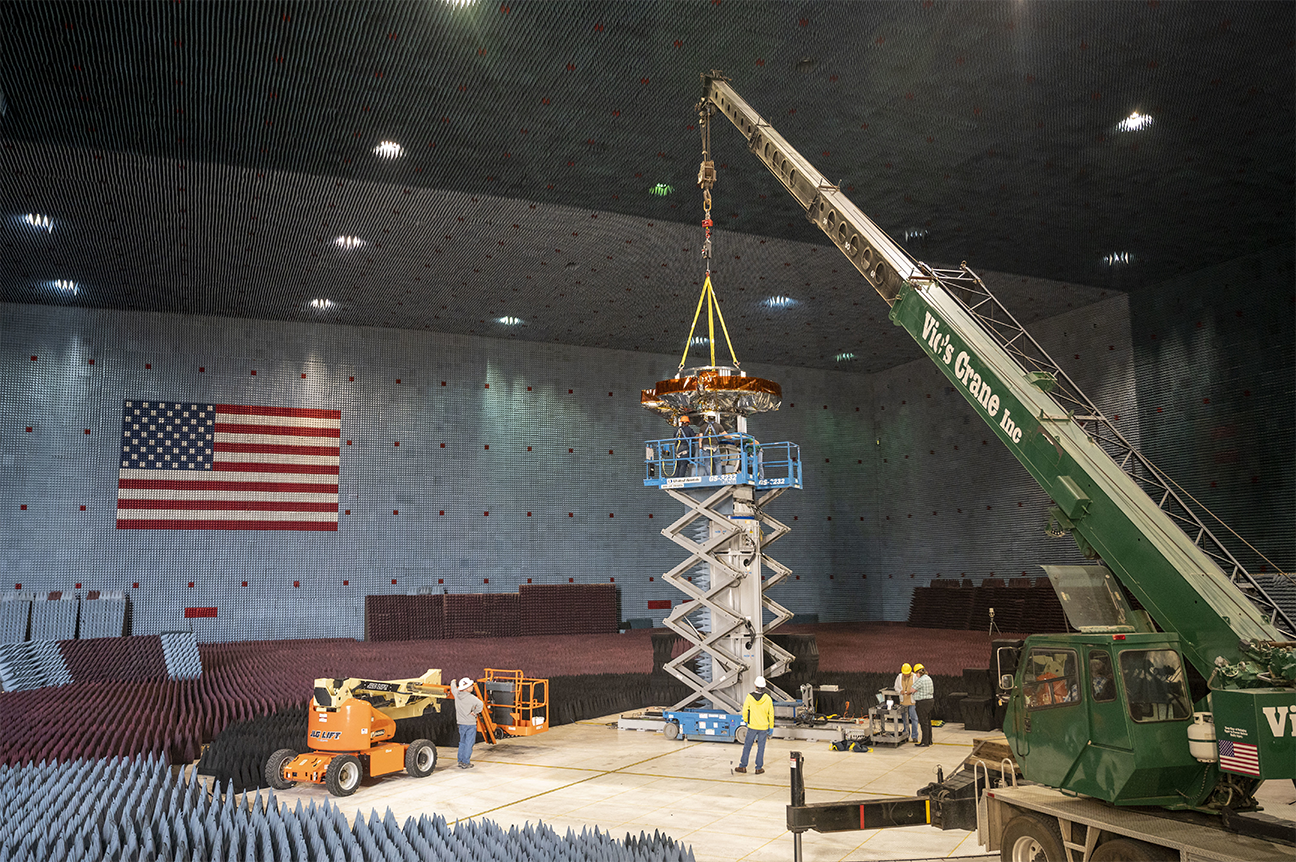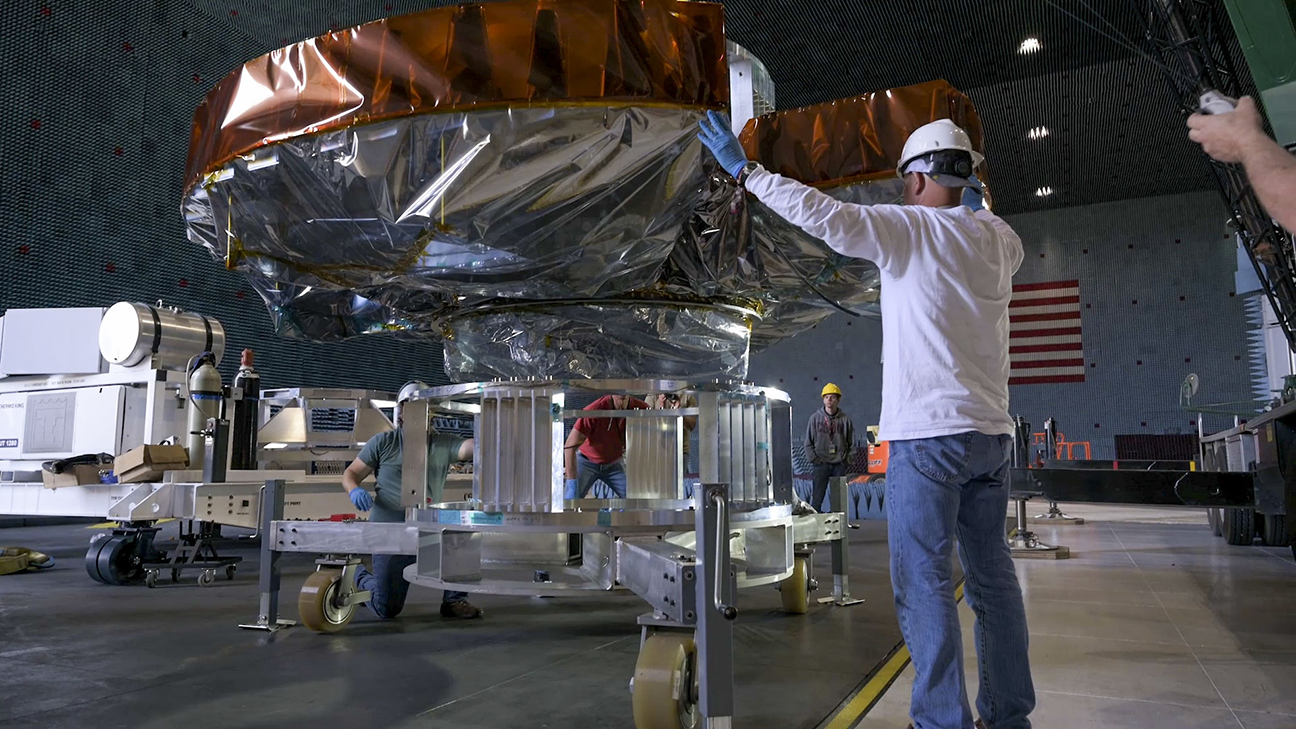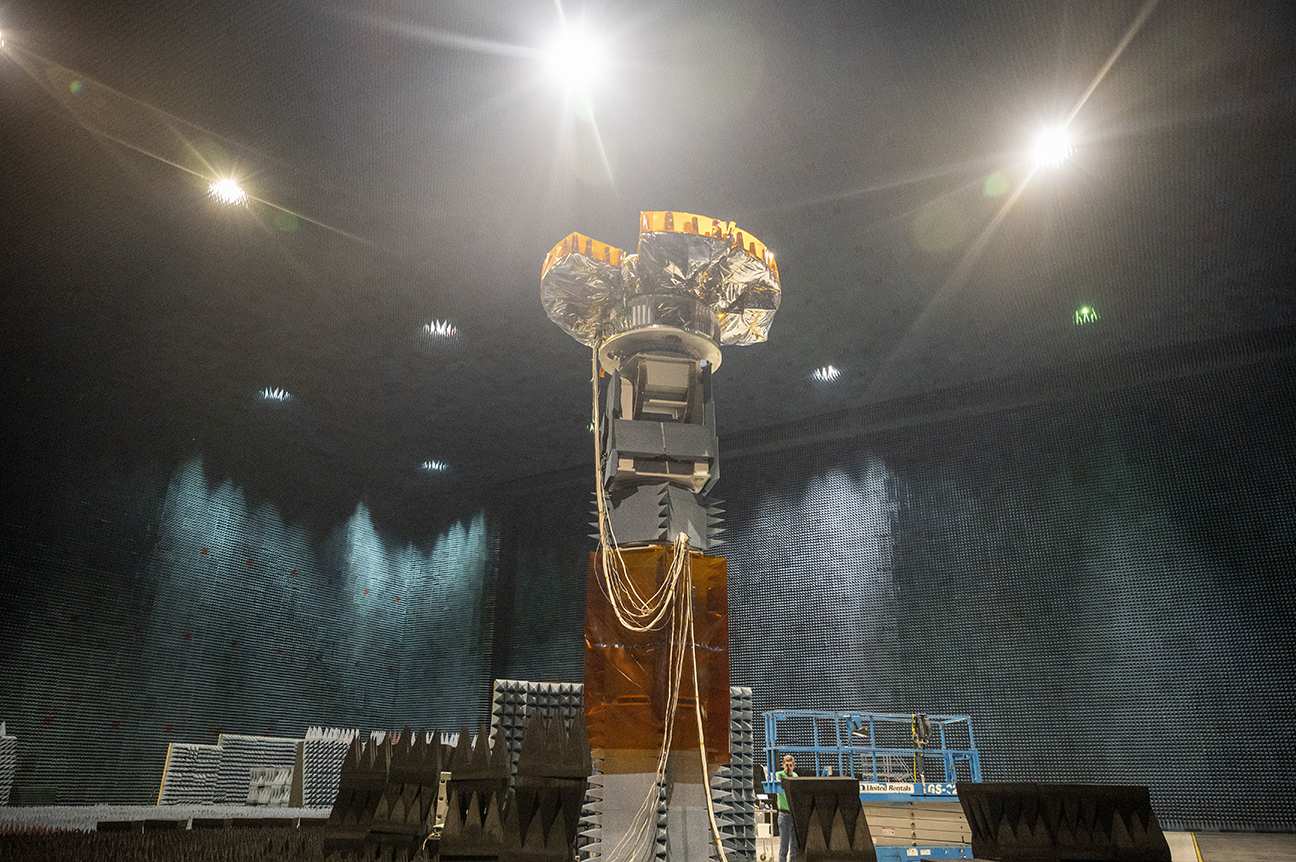A Mission Out of This World: The Benefield Anechoic Facility tests first space satellite in decades
EDWARDS AIR FORCE BASE, Calif. — The Benefield Anechoic Facility (BAF) at Edwards AFB recently tested its first orbital satellite in decades. Anticipated to launch in late 2023, Navigation Technology Satellite-3 (NTS-3) will be the Department of Defense’s first experimental, integrated navigation satellite system in nearly 50 years.
“This is so important because we are testing one of the new satellites that will be going up into space to help with all of our GPS systems,” Amarachi Egbuziem-Ciolkosz, Engineer, 772nd Test Squadron said. “It’s probably going to affect so many lives; not just military but commercial alike.”

The Benefield Anechoic Facility recently tested its first space satellite in decades. Anticipated to launch in late 2023, Navigation Technology Satellite-3 (NTS-3) will be the Department of Defense’s first experimental, integrated navigation satellite system in nearly 50 years
In 2019, the Department of the Air Force designed NTS-3 as one of the three Vanguard programs with the goal of delivering remarkable new capabilities that provide warfighters superior advantages in the battlefield. NTS-3, developed by L3Harris Technologies, builds on the legacy of NTS-1 and NTS-2, which were launched in the 1970s. The satellite is poised to push the boundary of today’s space-based position, navigation and timing (PNT) technology paving the way for a more robust, resilient and responsive architecture for satellite (SATNAV) technology.

In 2019, the Department of the Air Force designed NTS-3 as one of the three Vanguard programs with the goal of delivering remarkable new capabilities that provide warfighters superior advantages in the battlefield
The rapidly increasing pace of threats to GPS such as jamming and spoofing, however, indicate that agile and resilient approaches to augment the GPS system are needed to maintain the users’ access to its critical service. This is especially true for the warfighter.
“We are testing when a satellite sends out a signal, we can actually receive that signal and it’s the correct one,” Egbuziem-Ciolkosz said. “You don’t want a satellite to send you back a signal that your house is 10 miles away when it’s actually right in front of you. We are testing all of that.”

Truly a team effort, the U.S. Air Force, U.S. Space Force, Air Force Research Laboratory and NASA’s Jet Propulsion Laboratory all had critical roles in this historic testing of the NTS-3 satellite.
The largest anechoic test facility in the world, the BAF, provides shielding effectiveness that allows GPS tracking and jamming tests without frequency management or regulatory agency approval.
“The BAF is large enough and has enough infrastructure around it,” Arlen Biersgreen, NTS-3 Program Manager, Air Force Research Laboratory (AFRL) said. “It is a quiet enough chamber that protects the aircraft and other GPS users outside of the facility. We needed to have a shielded, large enough area to keep the energy of the testing inside the facility. Across the board, the BAF really fit the bill in a way no other facility in the United States really could.”

The largest anechoic test facility in the world, the BAF, provides shielding effectiveness that allows GPS tracking and jamming tests without frequency management or regulatory agency approval.
GPS has become a vital utility for both the warfighter and commercial use across the world. NTS-3 will demonstrate technologies and techniques to augment the GPS constellation to help maintain access to GPS in contested environments. Testing at the BAF is an important step in ensuring that the AFRL team is ready to successfully conduct on-orbit experiments.
“The value of all of this is to allow for everything to be synchronized together,” Thomas Roberts, NTS-3 Chief Engineer, Air Force Research Laboratory said. “Whether it be airline schedules, take offs/landings at the airports or military operations, NTS-3 is taking this a step further because we are using clocks; but we are also doing a demonstration of advanced signals and signal flexibility. Our ability to get that job done is dependent on the success of this testing facility.”
After the testing is complete, the NTS-3 will operate for one year in a near-geosynchronous orbit and will broadcast navigation signals from its phased array antenna. But before this happens, a few more steps in the NTS-3’s journey need to be made.

After the testing is complete, the NTS-3 will operate for one year in a near-geosynchronous orbit and will broadcast navigation signals from its phased array antenna.
“We are approaching the very end of our I&T campaign,” Biersgreen said. “After we are done here at the BAF, we will transport the satellite to Kirtland Air Force Base and get it back into our integration and test facility. We have thermal vacuum testing where we will be simulating the environment the satellite will be operating in. We also have testing to show that the ground system is compatible with the satellite. After that, we have a long training campaign for our operations crew so everyone on the team is ready to conduct this experiment after we launch.”
Truly a team effort, the U.S. Air Force, U.S. Space Force, Air Force Research Laboratory and NASA’s Jet Propulsion Laboratory all had critical roles in this historic testing of the NTS-3 satellite.
“It took countless engineers’ time and a lot of engineering effort to figure out how exactly to do this testing,” Egbuziem-Ciolkosz said. “We ran into hurdles but with the team we have here, we overcame all of them. It has been such a great time and these engineers truly blew me away with all the effort to make our mission successful. We get to see all our hard work finally realized and get to see the results that will benefit countless lives.”
